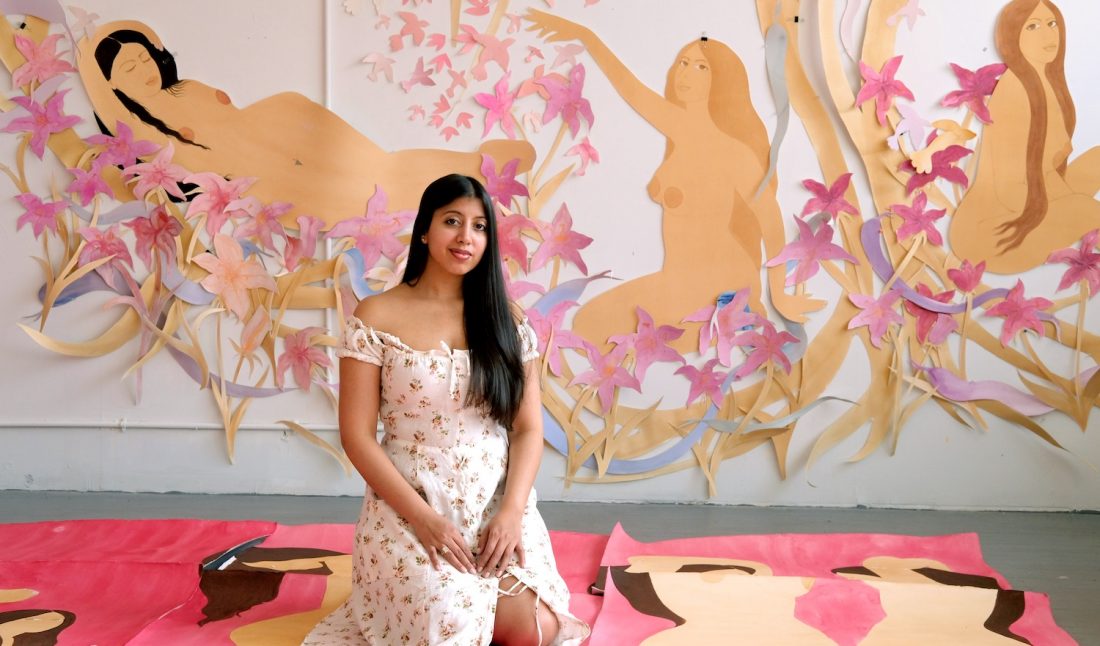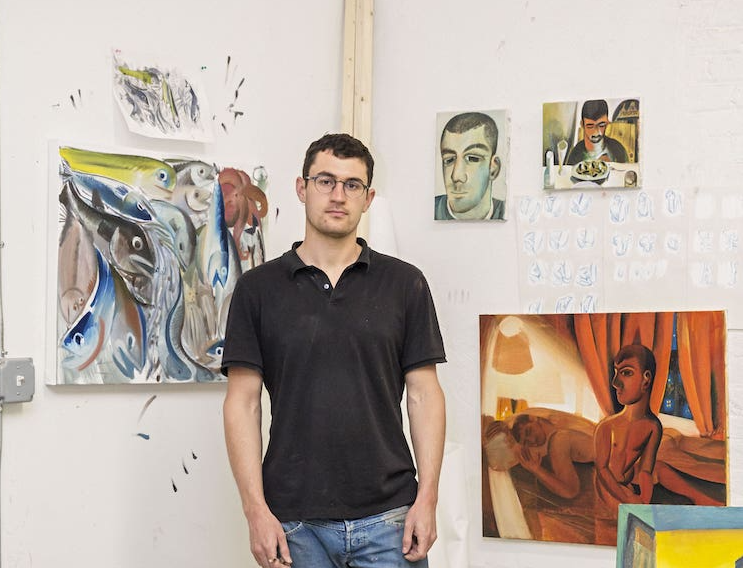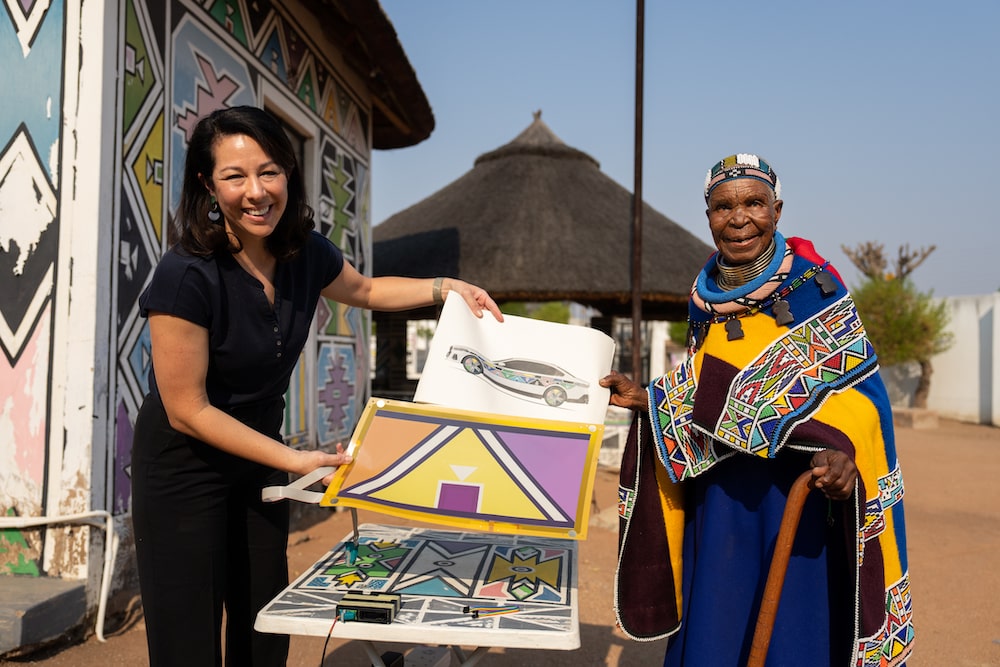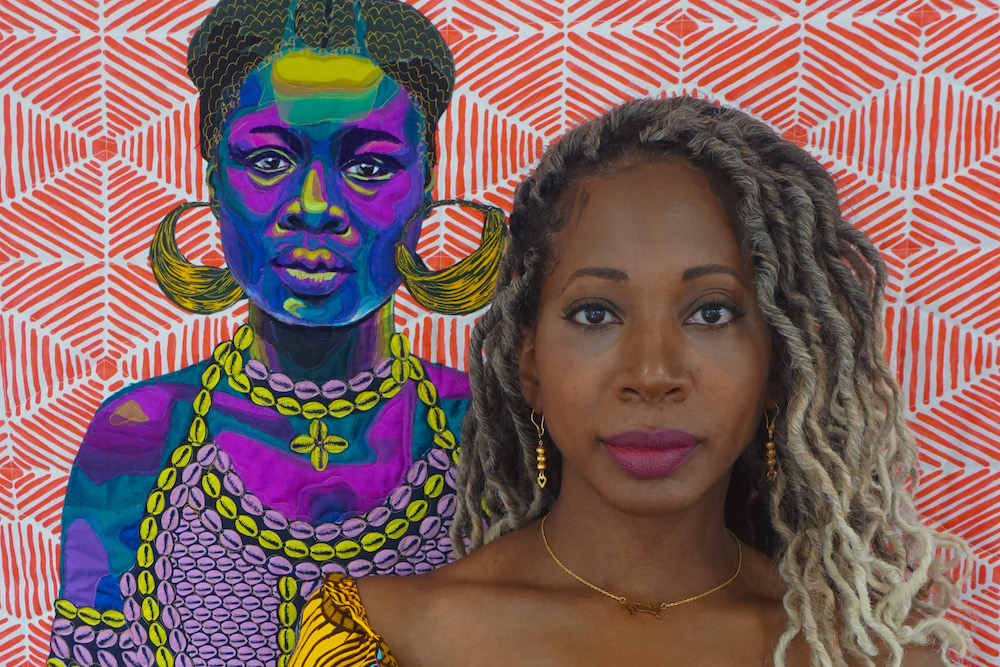Art Production Fund’s “Art in Focus” program is starting the year with a sense of optimism and beauty with a multi-faceted installation by Hiba Schahbaz at Rockefeller Center in New York. On view through May 1, “In My Heart” includes a selection of site-specific installations, large and small murals, works on paper, and more.
Painted cutout works feature mythological garden scenes and lounging female figures—a regular theme in Schahbaz’s work that here intends to create a calm space for healing amid the ongoing COVID-19 pandemic. Along that creative thread, the Brooklyn-based artist filled the plaza’s concourse display with a 125-foot long site-specific mural, designed to narrate a scene depicting life’s journey.
Whitewall spoke with Schahbaz to learn more about her practice, how it translates to “In My Heart,” and why the materials and figures seen in her work carry such importance.
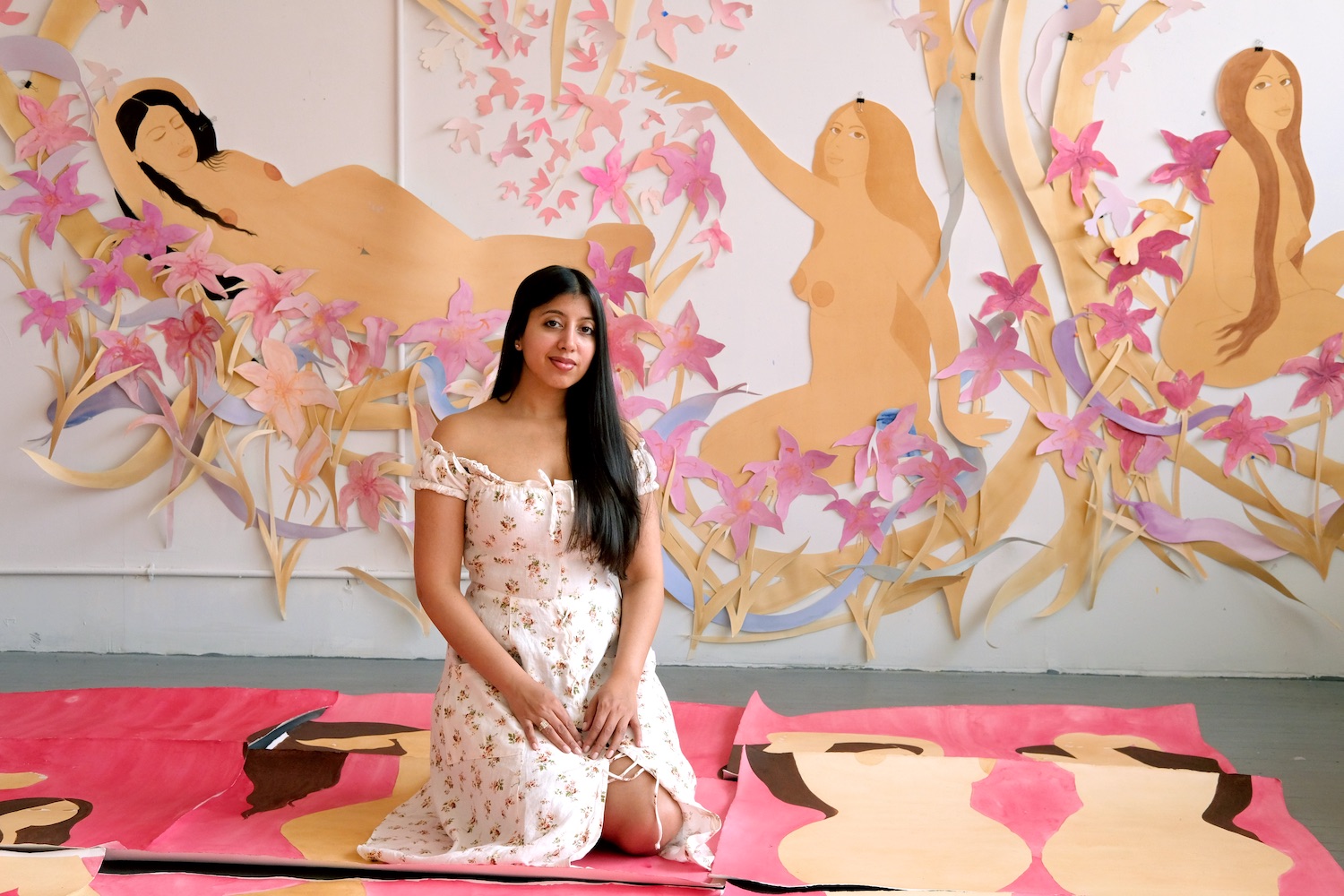 Courtesy of Hiba Schahbaz.
Courtesy of Hiba Schahbaz.
WHITEWALL: “In My Heart” incorporates elements of self-portraiture, art history, mythology, and autobiography. Can you tell us a bit about your works included in the show, and how they touch upon these elements?
HIBA SCHAHBAZ: The intention of this public art installation is to create a beautiful space within the city. I wanted people who are just going about their day to experience the art and perhaps have a moment that transcends ordinary life.
“In My Heart”includes a selection of paintings and site specific installations displayed throughout Rockefeller Center. These works include a 125-foot concourse mural, three installations of original works on paper in the lobby of 45 Rockefeller, and smaller murals scattered throughout the campus. One is a portrait of me with my parents, and there is also a painting after the myth of Daphne turning into a tree, as well as a self-portrait after [Jean-Baptiste-Camille] Corot’s famous work, Repose.
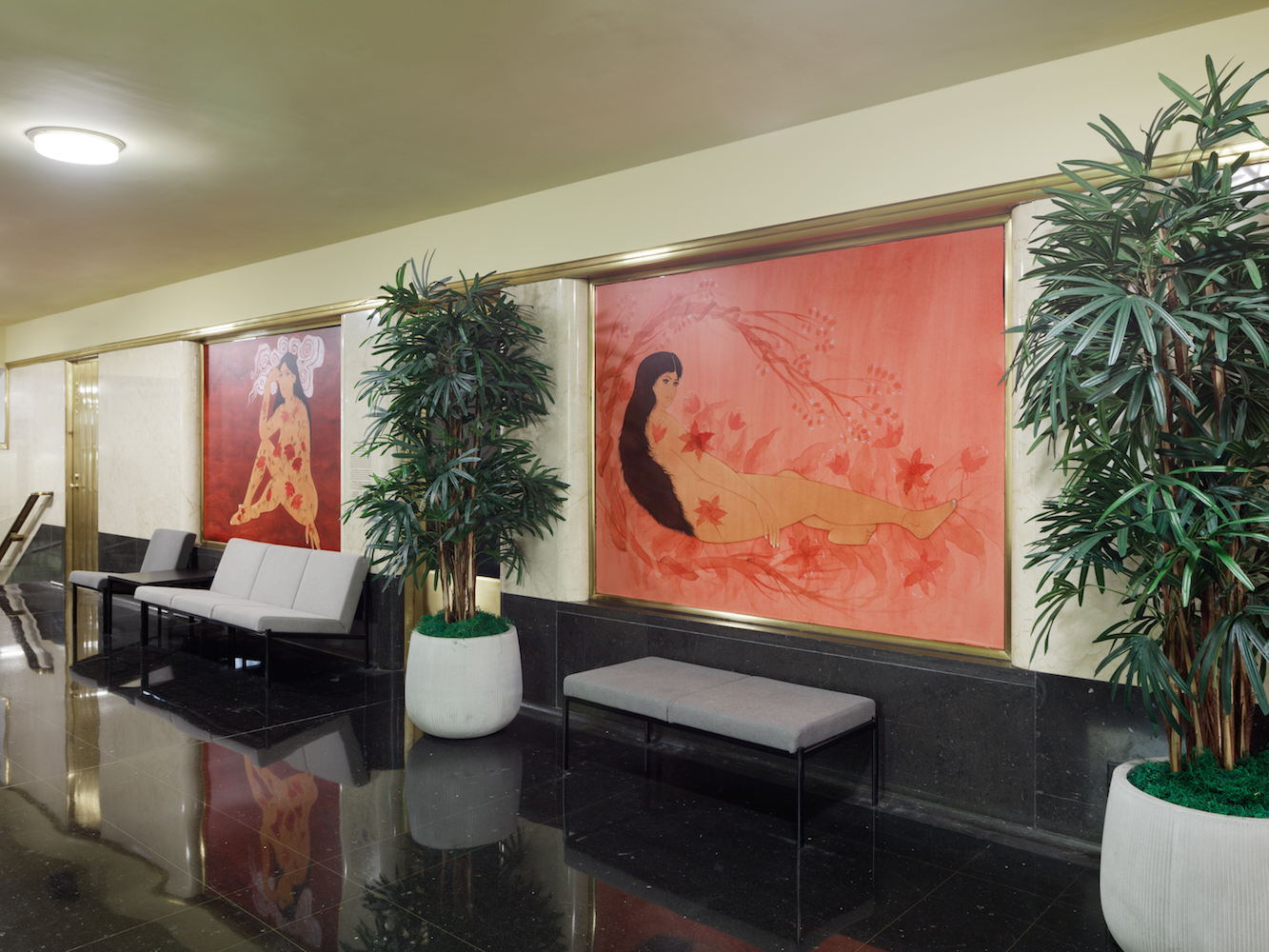 Install images of “In My Heart” by Hiba Schahbaz by Olympia Shannon, courtesy of Art Production Fund.
Install images of “In My Heart” by Hiba Schahbaz by Olympia Shannon, courtesy of Art Production Fund.
WW: Your site-specific installation features three mythological garden scenes with gardens, animals, and female figures—an atmosphere inspired by your personal narrative, yet this time intended to create a healing space in the city. How did this type of scene originally come about for you personally?
HS: I began creating cutouts after the 2018 election. It was a turbulent time and I needed joy and comfort, so I made an installation in my studio to surround myself with beauty. This space became a sanctuary for me and my studio visitors, a place where we could feel safe and free to express ourselves.
I painted women, wildlife, birds, trees, and flowers on paper and then cut them out. Soon I had hundreds of pieces of painted paper and compiled them to depict scenes from nature. My desire was to grow a garden in the studio and soon it became filled with birds and flowers.
Creating and living amongst these gardens was healing for me and I wanted to share them with the city at this juncture since we are all going through a difficult time. I hope that they will bring the same energy to everyone who experiences them.
WW: What was the creative process like in your Brooklyn studio, making the painted paper cutouts and large paper paintings?
HS: Creating garden scenes from cutouts is a very organic and freeing process. I lay out all the various elements on the floor and let the work come together in a way that feels good. For my installation at Rockefeller Center, the process was similar. I brought all the cutouts into the space and selected flowers and birds in shapes and colors which felt right in the space.
The painting on display is made of four sheets of paper joined together to make a large paper canvas. I began this painting at home in quarantine and it is painted with tea and watercolor, the same materials as the installation works.
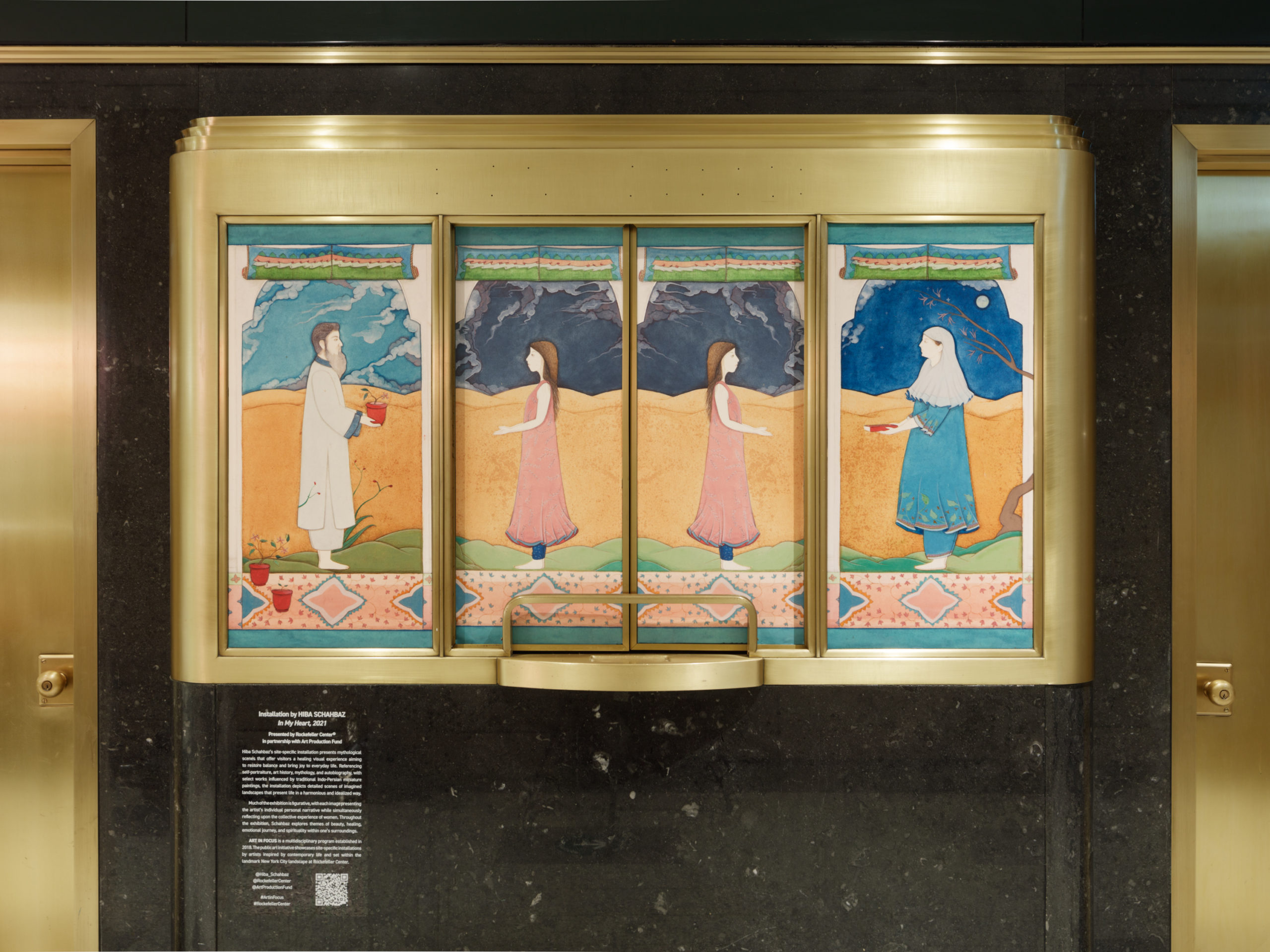 Install images of “In My Heart” by Hiba Schahbaz by Olympia Shannon, courtesy of Art Production Fund.
Install images of “In My Heart” by Hiba Schahbaz by Olympia Shannon, courtesy of Art Production Fund.
WW: The installations touch upon your personal narrative, while simultaneously reflecting on a collective experience of women. Can you describe the experience you’re communicating—through themes of beauty, healing, emotional journey, and spirituality?
HS: Women and our stories are an important part of my life and have always woven themselves into my work. Sometimes I reflect on a narrative in my own life, and I also often hold space for someone else’s story. I feel so grateful that so many women share their stories with me, and I’ve noticed that often we have similar emotional and physical experiences across different cultures, religions, and generations.
WW: Your work overall addresses issues of personal freedom, destruction, sexuality, and censorship by unveiling the beauty, fragility, and strength of the female form. Do you feel that these sentiments are heightened now amidst the isolation brought on by COVID-19?
HS: Last year was a year of transformation, loss, and vulnerability for so many of us. We’ve all found ourselves coping in different ways. I am typically a bit hermetic and insular and I found myself extending outward. Reaching out to friends, finding ways to be of service in our community, and going deeper into my meditation practice helped me to focus on the need for gentleness and creating connection. Through this difficult time, holding space for others and for our collective healing has been an important part of my conscience.
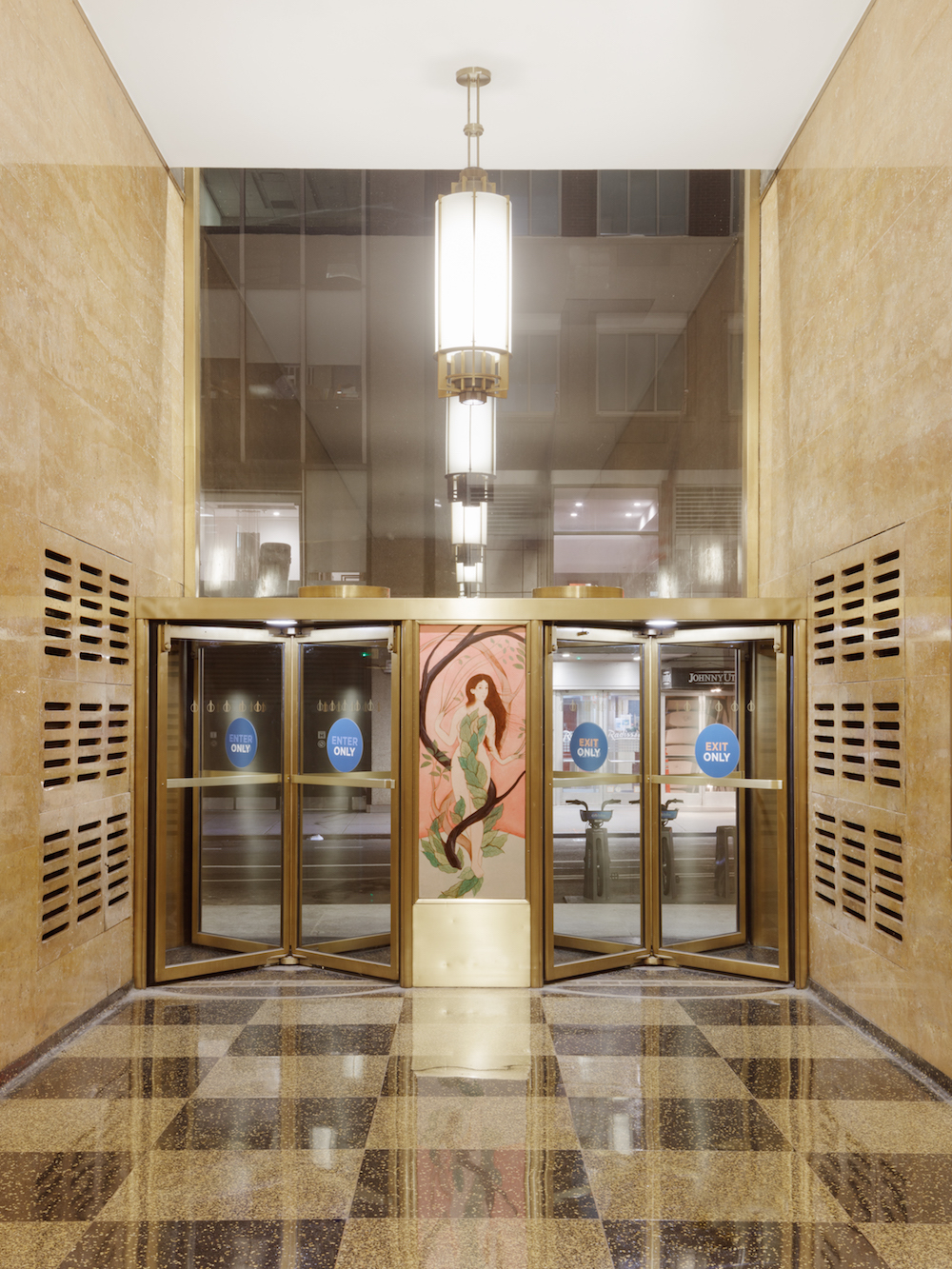 Install images of “In My Heart” by Hiba Schahbaz by Olympia Shannon, courtesy of Art Production Fund.
Install images of “In My Heart” by Hiba Schahbaz by Olympia Shannon, courtesy of Art Production Fund.
WW: The concourse display at 45 Rockefeller Plaza also features a 125-foot long site-specific mural, specifically designed for this space to narrate a scene depicting life’s journey. Why? What is seen here?
HS: The concourse mural begins in a garden space. A woman is playing a flute as she reclines on a sleeping lion. Peacocks and women dance in front of her. The painting transforms into a lotus pond where women are immersed in pink water surrounded by pink and white blooms. Further ahead, a dragon steps out of the water and breathes the sky into existence. We see winged figures amongst the clouds as the day turns into a deep, star-filled night sky. Finally, a flying winged figure emphasizes the moon with one hand as she cradles stars in the other.
This work was painted specifically for the space. The pink lotus pond within the painting is my tribute to the spirit of New Yorkers who remain resilient as they navigate through today’s unprecedented landscape. And the last section of the mural was inspired by Barry Faulkner’s beautiful mosaic, Intelligence Awaking Mankind, which is a permanent artwork installed at Rockefeller Center.
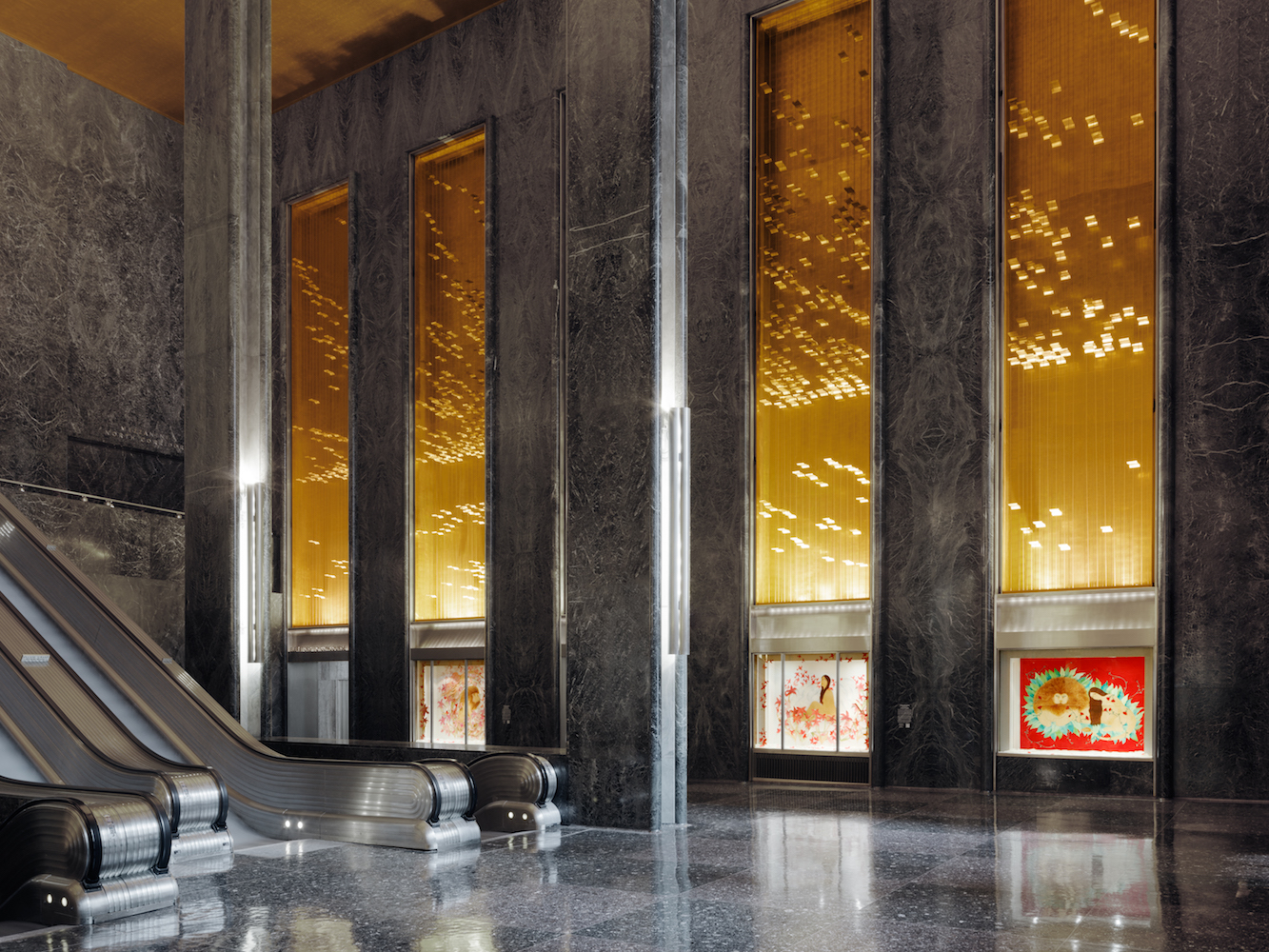 Install images of “In My Heart” by Hiba Schahbaz by Olympia Shannon, courtesy of Art Production Fund.
Install images of “In My Heart” by Hiba Schahbaz by Olympia Shannon, courtesy of Art Production Fund.
WW: Tell us a bit about your overall creative influence, including traditional Indo-Persian paintings and imaginary gardens.
HS: As a student of Indo-Persian painting growing up in Pakistan, the language of beauty and the ideals of Eastern art are an important part of my vocabulary and aesthetic. I draw from the world of imagination, depicting life and nature through a lens of perfection and wonder. Perspective is reduced to show aesthetic details. Colors are bright and harmonious. Bodies are smoothed out to flow with their surrounding, instead of emphasizing muscles and bones. As an artist, I represent life but do not compete with what is real.
WW: Typically, you work with paper, black-tea, and water-based pigments. What meaning do these materials hold for you?
HS: Tea is an important part of my life and of South Asian culture. Now I make it into pigment and paint with it. The figures, lions, and many natural elements in the vitrines at Rockefeller Center are painted with tea. Hand made paper and paints, tea, and gold leaf are all materials used in traditional miniature painting which have carried into my larger works on paper.






